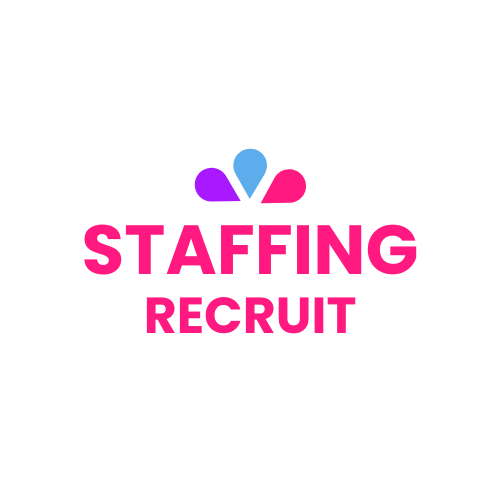Introduction
Inclusive hiring transforms traditional recruitment by creating equal opportunities for all qualified candidates, regardless of their background, identity, or circumstances. This approach goes beyond basic diversity initiatives to build a recruitment process that actively welcomes and values different perspectives, experiences, and talents.
Technology plays a crucial role in modern inclusive hiring practices. Advanced tools and digital platforms help organisations:
- Remove unconscious bias through automated screening processes
- Expand reach to diverse talent pools
- Standardise evaluation criteria for fair assessment
- Track diversity metrics for continuous improvement
The benefits of implementing technology-driven inclusive hiring extend across the organisation:
- Enhanced innovation through diverse perspectives
- Improved employee engagement and retention
- Stronger company culture and reputation
- Increased market understanding and competitiveness
- Better problem-solving capabilities
By combining thoughtful inclusive practices with strategic technology implementation, organisations can build a recruitment process that attracts, evaluates, and selects talent from all walks of life, creating a workforce that truly represents our diverse society.
The Business Case for Inclusive Hiring
Organisations embracing inclusive hiring practices experience substantial benefits across multiple business dimensions. Research by McKinsey reveals companies with diverse workforces are 35% more likely to outperform their competitors financially.
Diverse perspectives in the workplace drive:
- Enhanced problem-solving capabilities through varied approaches
- Increased innovation from different cultural insights
- Stronger decision-making processes
- Improved market understanding and customer service
The impact on employee retention and productivity presents compelling statistics:
- 87% of diverse organisations report better business decisions
- Companies with inclusive cultures see 5.4 times higher employee retention according to hiring statistics
- Diverse teams demonstrate 60% faster decision-making capabilities
Building an inclusive workplace creates a positive cycle of talent attraction and retention. Companies known for their inclusive practices:
- Attract candidates from wider talent pools
- Reduce recruitment costs through improved retention
- Build stronger employer branding
- Generate positive word-of-mouth recommendations
The reputation benefits extend beyond recruitment. Modern consumers and business partners actively seek organisations demonstrating commitment to diversity. Companies with strong inclusive practices report:
- Higher customer satisfaction rates
- Increased brand loyalty
- Stronger partnerships with diverse suppliers
- Enhanced stakeholder relationships
These measurable advantages demonstrate how inclusive hiring practices directly contribute to organisational success, creating sustainable competitive advantages in today’s global marketplace. Furthermore, the benefits of diversity and inclusion in the workplace extend beyond financial performance, influencing overall company culture and employee satisfaction positively.
Legal Considerations in Inclusive Hiring
Organisations must navigate a complex web of anti-discrimination laws during their recruitment processes. The U.S. Equal Employment Opportunity Commission (EEOC) enforces several key federal laws:
- Title VII of the Civil Rights Act: Prohibits discrimination based on race, color, religion, sex, and national origin
- Americans with Disabilities Act (ADA): Requires reasonable accommodations for qualified individuals with disabilities
- Age Discrimination in Employment Act (ADEA): Protects applicants aged 40 and older
- Genetic Information Nondiscrimination Act (GINA): Prevents discrimination based on genetic information
These laws apply to various recruitment stages:
- Job Postings: Must avoid language suggesting preference for specific protected characteristics
- Application Process: Should provide equal access and reasonable accommodations
- Interview Questions: Must focus on job-related qualifications rather than personal characteristics
- Selection Criteria: Should be consistently applied and based on legitimate business needs
State and local jurisdictions often implement additional protections beyond federal requirements. For example, some states prohibit employers from asking about salary history or criminal records during initial application stages.
Employers face significant penalties for non-compliance, including fines, legal costs, and reputational damage. Regular audits of hiring practices help ensure compliance and identify potential discrimination risks before they become legal issues.
Leveraging Technology for Bias Reduction in Recruitment
Modern recruitment technology serves as a powerful ally in creating fair, inclusive hiring processes. Applicant Tracking Systems (ATS) have evolved beyond simple resume screening tools to become comprehensive platforms for bias reduction.
Key ATS Features for Inclusive Hiring:
- Blind Screening Capabilities: Automated removal of demographic information, including names, photos, and age-related details
- Standardised Evaluation: Pre-set assessment criteria applied consistently across all candidates
- Skills-Based Matching: AI-powered algorithms focusing on qualifications and experience rather than personal characteristics
- Language Analysis Tools: Detection and elimination of gender-coded or biased language in job descriptions
Technology Solutions Across Recruitment Stages:
1. Application Phase
- Smart forms that collect only relevant professional information
- Accessibility features for candidates with disabilities
- Multi-language support options
2. Screening Phase
- AI-powered resume parsing with bias-free algorithms
- Structured digital assessments with standardised scoring
- Video interview platforms with consistent question sets
3. Interview Phase
- Virtual interview tools with built-in bias prevention features
- Automated scheduling systems providing equal access to interview slots
- Digital assessment rubrics ensuring uniform candidate evaluation
Advanced Bias Reduction Technologies:
Machine learning algorithms now analyse historical hiring data to identify patterns of bias, allowing organisations to correct discriminatory trends before they impact decision-making. These systems can flag potential bias triggers in real-time, prompting recruiters to reassess their choices.
Implementation Best Practices:
- Regular calibration of AI algorithms to prevent learned biases
- Integration of multiple technology solutions for comprehensive bias reduction
- Continuous monitoring of diversity metrics through automated reporting
- Regular training for hiring teams on proper use of bias-reduction tools
Human-technology collaboration creates a powerful framework for inclusive hiring, combining the efficiency of automated systems with human judgment to make fair, merit-based decisions.
U.S. Department of Labor Initiatives: AI & Inclusive Hiring Framework
The U.S. Department of Labor’s AI & Inclusive Hiring Framework is a groundbreaking initiative designed to guide organisations in implementing AI-driven recruitment tools responsibly. It is based on best practices from the National Institute of Standards and Technology (NIST) and addresses the growing intersection of artificial intelligence and inclusive hiring practices.
Ten Critical Focus Areas
The framework includes ten critical focus areas:
- Legal Compliance Assessment: Ensuring AI tools align with existing employment laws and regulations
- Technology Evaluation: Analysing AI systems for potential biases and accessibility barriers
- Impact Measurement: Regular assessment of AI tools’ effects on different demographic groups
- Accommodation Processes: Creating flexible systems to support candidates with disabilities
- Data Privacy: Protecting candidate information while maintaining transparency
- Algorithm Auditing: Regular review of AI decision-making processes
- Training Requirements: Educating hiring teams on proper AI tool usage
- Documentation Standards: Maintaining detailed records of AI system operations
- Feedback Mechanisms: Collecting user input for continuous improvement
- Risk Management: Identifying and mitigating potential discriminatory practices
The framework emphasises the importance of proactive monitoring and continuous assessment of AI recruitment tools. Organisations must conduct regular audits to identify potential discriminatory impacts and implement necessary adjustments. This approach helps create a balanced system where technology enhances rather than hinders inclusive hiring practices.
Companies implementing the framework are encouraged to establish clear documentation processes and maintain transparent communication about their AI-driven hiring practices. This transparency builds trust with candidates and demonstrates commitment to fair employment practices.
Best Practices for Implementing Technology-Driven Inclusive Hiring Strategies
Creating an inclusive hiring process requires strategic use of technology in job descriptions and career website design. Here’s how organisations can implement effective inclusive hiring practices:
Writing Inclusive Job Descriptions
- Use gender-neutral language and avoid gender-coded terms
- Replace industry jargon with clear, accessible language
- Focus on essential qualifications rather than “nice-to-have” requirements
- Highlight company commitments to diversity, equity, and inclusion
- Incorporate AI-powered tools to scan for potentially biased language
- Include salary ranges and benefits information transparently
Enhancing Career Website Accessibility
- Implement screen reader compatibility across all web pages
- Provide alternative text for images and multimedia content
- Ensure proper color contrast for better readability
- Design mobile-responsive layouts for cross-device accessibility
- Add keyboard navigation options
- Offer multiple application formats (text, video, audio)
Technical Implementation Tips
- Install accessibility checking plugins to monitor website compliance
- Use automated tools to test readability scores of job descriptions
- Create standardised templates with pre-approved inclusive language
- Enable translation features for multiple language support
- Implement chatbots programmed with inclusive language
- Regular testing with diverse user groups to identify potential barriers
Organisations can leverage tools like Textio or Gender Decoder to analyse job postings for bias. Website accessibility tools such as WAVE or AChecker help ensure compliance with WCAG guidelines. These technological solutions create a foundation for attracting diverse talent while maintaining equal access to opportunities.
Measuring the Effectiveness of Technology-Enabled Inclusive Hiring Initiatives
Data-driven assessment plays a crucial role in understanding the impact of inclusive hiring initiatives. Organisations can implement these key measurement strategies:
1. Quantitative Metrics Analysis
- Applicant pool diversity ratios
- Interview-to-hire rates across different demographic groups
- Time-to-hire variations among diverse candidates
- Source effectiveness for diverse talent acquisition
2. Qualitative Assessment Methods
- Anonymous candidate feedback surveys
- Hiring manager experience reports
- Post-hire retention tracking
- Employee engagement scores
Organisations can leverage HR analytics platforms to automate data collection and generate real-time insights. These tools track progress through customisable dashboards that highlight:
- Pipeline diversity at each recruitment stage
- Bias detection in job posting language
- Interview panel representation
- Offer acceptance rates across demographics
Regular assessment intervals (quarterly, bi-annual, annual) help identify trends and areas for improvement. Companies should establish baseline metrics before implementing new initiatives to measure progress effectively.
Success Indicators
- Increased diversity in leadership positions
- Improved candidate experience ratings
- Higher retention rates among diverse hires
- Enhanced employer brand perception
Advanced AI analytics can identify correlations between hiring practices and workplace performance, providing deeper insights into the long-term value of inclusive recruitment strategies.
Case Study: Chipotle’s Approach to Promoting Inclusion Through Technology-Driven Recruitment Practices
Chipotle Mexican Grill is a great example of how technology can be used to promote inclusive hiring practices. The company’s innovative recruitment strategy has led to significant improvements in workforce diversity and employee satisfaction.
Key Technology Implementations:
- AI-powered candidate screening system that focuses on skills and potential
- Virtual reality training programs accessible to all employees
- Mobile-first application platform with multilingual support
- Automated scheduling tools that accommodate diverse needs
The Results:
The company’s commitment to inclusive hiring has resulted in:
- 70% of restaurant management roles filled through internal promotions
- 61% of staff members from minority backgrounds
- 53% female representation across all positions
- 90% employee satisfaction rate
The Three-Pillar Approach
Chipotle’s success can be attributed to their three-pillar approach:
- Technology Integration: Using AI to remove initial screening biases
- Skills-First Focus: Evaluating candidates based on capabilities rather than traditional credentials
- Career Development: Implementing accessible digital learning platforms
The Positive Feedback Loop
The company’s experience shows that technology-driven inclusive hiring creates a positive feedback loop: diverse teams attract diverse talent, leading to improved innovation and customer service. Chipotle’s approach serves as a blueprint for organisations looking to use technology to build inclusive workforces.

